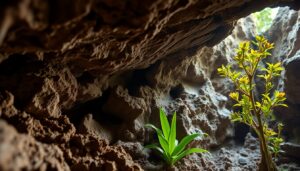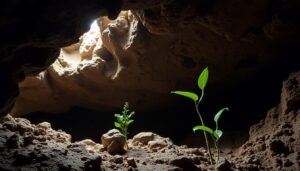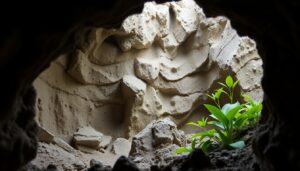Belize, celebrated for its stunning coral reefs and ancient Maya ruins, conceals an extraordinary array of archaeological and ecological marvels beneath its surface. The extensive network of limestone cave systems has long fascinated both researchers and thrill-seekers, offering unique insights into the ancient Maya ritual life, detailed climate records, and distinctive subterranean ecosystems. Recent scientific investigations within the caves of Belize have unveiled astonishing discoveries that not only deepen our understanding of the Maya civilization but also illuminate historical climate changes and the presence of rare, previously unidentified cave species.

1. Uncover the Enigmatic Maya Rituals Within Belize's Remarkable Caves
The intriguing cave systems of Belize, including the famed Actun Tunichil Muknal (ATM Cave), Barton Creek Cave, and Cara Blanca Caves, have provided some of the most compelling archaeological evidence regarding Maya sacrificial and ceremonial practices. These sacred caves were believed to serve as gateways to the Maya underworld, known as Xibalba. Recent archaeological discoveries have significantly enhanced our understanding of their deep spiritual and societal implications, revealing layers of complexity that were previously unrecognised and highlighting the centrality of these sites in the Maya worldview.
1.1 The New Perspective on the Notorious “Crystal Maiden” Skeleton
The well-known calcified skeleton, popularly termed the Crystal Maiden, located within ATM Cave, has long been thought to be the remains of a female sacrifice. However, recent forensic evaluations have led to a significant reassessment of this interpretation. Through advanced isotopic and morphological investigations, it has been suggested that these remains are more likely to belong to a young male. This pivotal realisation encourages scholars to revisit the social and religious dynamics surrounding human sacrifices in Maya ritual practices, particularly during periods of environmental turmoil, such as the notable droughts that occurred around the 9th century CE.
1.2 Uncovering New Dimensions of Maya Ritual Practices
Excavations in Barton Creek and Cara Blanca have revealed previously undocumented ceremonial chambers, complete with intact pottery assemblages and human remains, encompassing both infants and adults. The existence of “kill holes” punctured through ceramic vessels suggests a prevalence of ritualistic ceremonies aimed at the “spirit release” conducted within these revered caves. These findings imply that Maya cave rituals were not only more intricate but also more widely performed across various regions than previously believed, reflecting a rich tapestry of cultural customs and traditions vital to the Maya community.
1.3 Connecting Maya Cave Rituals to Archaeoastronomy Discoveries
Recent scholarly research has uncovered alignments of cave altars and hieroglyphic inscriptions that correspond with significant solar events, such as equinoxes and solstices. By employing laser scanning and photogrammetry techniques, researchers have confirmed that beams of natural light penetrate deeply into select caves on sacred dates, illuminating focal points designed for ritualistic activities. This compelling evidence supports the hypothesis that Maya priests utilised caves not merely as spiritual sanctuaries but also as astronomical observatories, intricately linked to their calendrical system and rituals, thus reinforcing the multifaceted nature of Maya spirituality.
2. Revealing Paleoclimate Insights Through Belize’s Cave Stalagmites
Thorough examinations of stalagmites from significant caves such as Caves Branch and Actun Halal have enabled scientists to date and analyse stable oxygen and carbon isotopes, yielding intricate paleoclimatic records. The layered formations of these mineral deposits create year-by-year chronologies of humidity and rainfall, which correlate strongly with archaeological evidence of societal transformations and the eventual collapse of the Maya civilization around 900 CE. These findings expose critical climate transitions that had a profound impact on the region and its inhabitants.
Researchers have identified substantial declines in precipitation, labelled as megadroughts, which likely put immense pressure on food production systems and spurred an increase in ritualistic activities within the caves. The paleoclimate reconstructions derived from Belize’s caves represent some of the most comprehensive climatic records in Mesoamerica, providing essential insights into how natural climate fluctuations have influenced human history and the evolution of Maya society.

3. Delving into the Unique Biodiversity of Belize's Hidden Cave Ecosystems
Beyond their archaeological and geological significance, the caves of Belize host vibrant ecosystems teeming with rare life forms that are uniquely adapted to thrive in perpetual darkness and isolation. Recent speleobiological expeditions have documented a variety of unique species, including blind crustaceans and specialized cave fish, along with distinct bat colonies exhibiting unusual behaviours. These findings accentuate the ecological importance of Belize’s caves and underscore their role in promoting biodiversity, which is crucial for the health of local ecosystems.
3.1 Identifying New Species and Patterns of Endemism in Cave Environments
Researchers have discovered several new species of crustaceans that are endemic to the subterranean waters of Belize, showcasing unique genetic adaptations that indicate long-term evolutionary isolation. Furthermore, various cave systems provide habitats for bat species that play essential roles in Belize’s biodiversity, including fruit bats, which are vital for seed dispersal and pollination, thereby significantly contributing to the health and sustainability of local ecosystems and the overall ecological balance.
3.2 Unveiling the Mysteries of Subterranean Lakes and Their Inhabitants
The exploration of previously unmapped cave passages has led to the discovery of water-filled chambers populated with previously unknown fauna. These subterranean lakes may host extremophile microorganisms akin to those theorised to exist on other planets, attracting the attention of both astrobiology and microbiology researchers. These significant findings could provide key insights into the adaptability of life in extreme environments, potentially offering a glimpse into the resilience of life forms under harsh conditions.
4. Examining the Broader Significance of Recent Discoveries in Belizean Caves
- Holistic Insights into Maya Studies: The archaeological and paleoclimatic revelations gained from Belize’s caves significantly enrich narratives surrounding ritual practices, political upheaval, and climate-induced societal transformations.
- Conservation Importance: These caves are not only vital heritage sites but also biodiversity hotspots that require protection from tourism and environmental threats to maintain their integrity and ecological balance.
- Impact on Sustainable Tourism Practices: The implementation of sustainable, guided access to these caves is essential for preserving their integrity while facilitating enriching educational and cultural tourism experiences that benefit both visitors and local communities.
5. Essential Guidelines for Responsible Exploration of Belizean Caves
Considering their archaeological sensitivity, prominent caves such as ATM necessitate guided tours led by licensed professionals, typically based in San Ignacio. Tourist groups are intentionally kept small and meticulously managed to protect fragile artifacts and delicate ecosystems. Photography may be restricted inside many caves to prevent potential damage, thereby enhancing the authentic and transformative experience for visitors, allowing them to fully engage with the natural beauty and historical significance of these sites.

Visitors are encouraged to wear appropriate footwear, prepare for physical activities such as swimming and climbing, and respect the local spiritual traditions associated with these caves to ensure a responsible and respectful engagement with this precious natural heritage.
6. Comprehensive Resources for Further Exploration of Belize’s Caves
- Smithsonian Magazine: New Evidence on ATM Cave’s ‘Crystal Maiden’
- National Geographic: Unveiling the Secrets of Maya Caves
- Cambridge University Press: Insights into the Cara Blanca Caves of Belize
- Solar Alignments in Belizean Caves – Archeoastronomy Journal
- Science Advances: The Impact of Climatic Events on Maya Civilization Collapse
- Speleological Society: Researching Cave Biodiversity in Belize
The caves of Belize continue to function as portals to ancient worlds, climatic histories, and unique biological realms. Each expedition into their depths promises the potential for new insights, solidifying Belize as a priceless treasure in both archaeological and natural sciences.
The Article Recent Discoveries in Belizean Caves: Archaeology, Climate, and Biodiversity Unveiled first appeared on Belize Travel Guide.
The Article Belizean Caves: Unveiling Archaeology, Climate, and Biodiversity Was Found On https://limitsofstrategy.com

